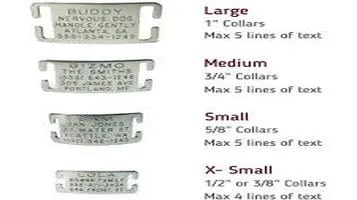Modern vs. Traditional Dining Room Designs: A Comprehensive Review
Modern dining room designs emphasize minimalism, clean lines, and a neutral color palette. They often incorporate sleek furniture made from materials like glass, metal, and polished wood, creating an airy and open space. Lighting is typically contemporary, with fixtures that serve as artistic focal points. Accessories are minimal, maintaining a clutter-free environment that highlights the room's architectural elements. In contrast, traditional dining room designs exude warmth and elegance, featuring rich wood finishes, ornate details, and classic furniture styles such as Queen Anne or Victorian. Color schemes are often warm and inviting, with deep hues and intricate patterns. Chandeliers and elaborate light fixtures are common, along with decorative elements like china displays and upholstered chairs, creating a timeless and cozy atmosphere.

Dining rooms have evolved over the years, reflecting changing social norms, aesthetic preferences, and technological advancements. The debate between modern and traditional dining room designs continues to captivate homeowners and interior designers alike. Both styles offer unique advantages and cater to different tastes and lifestyles. In this review, we'll explore the characteristics, benefits, and potential drawbacks of modern and traditional dining room designs.
Modern Dining Room Design
Characteristics:
Modern dining room design is characterized by its minimalist approach, clean lines, and the use of contemporary materials. This style often incorporates neutral color palettes, such as whites, grays, and blacks, occasionally accented with bold colors. Furniture pieces are sleek, functional, and often multi-purpose, reflecting an ethos of simplicity and efficiency.
Materials:
Modern designs frequently feature materials like glass, metal, and engineered wood. These materials not only contribute to a polished, streamlined look but also enhance the room's functionality. For instance, glass tabletops create an illusion of space, making the room feel larger and more open.
Aesthetic and Functionality:
The aesthetic of a modern dining room is often described as fresh and airy. Large windows, open layouts, and strategic lighting play crucial roles in creating this atmosphere. Pendant lights, track lighting, and recessed lighting are popular choices, adding to the overall sleekness.
Functionality is another cornerstone of modern design. Storage solutions, such as built-in cabinets and sideboards, are designed to be both practical and visually unobtrusive. Dining chairs and tables often have simple, geometric forms, making them versatile pieces that can fit into various settings.
Pros:
1. Versatility: Modern designs can easily be adapted to small or large spaces.
2. Low Maintenance: Materials like glass and metal are easy to clean and maintain.
3. Contemporary Appeal: This style is in line with current design trends, making it appealing to a broad audience.
Cons:
1. Cold Aesthetic: Some may find the minimalist approach too sterile or impersonal.
2. Trendy: Modern designs can sometimes fall out of fashion, requiring updates to stay current.
Traditional Dining Room Design
Characteristics:
Traditional dining room design, on the other hand, is characterized by its classic elements, rich textures, and ornate details. This style often leans on a warm color palette, featuring shades like deep reds, browns, and golds. Furniture pieces are usually crafted from solid wood and may include intricate carvings and embellishments.
Materials:
Wood is the cornerstone of traditional dining room design. Mahogany, oak, and cherry woods are popular choices, lending a sense of durability and timelessness. Upholstery often features luxurious fabrics like velvet, brocade, and damask, adding to the room's opulent feel.
Aesthetic and Functionality:
The aesthetic of a traditional dining room is often described as cozy and inviting. Chandeliers, sconces, and candle holders are commonly used to create a warm, ambient lighting environment. The layout tends to be more formal, with a focus on symmetry and balance.
While traditional design may not emphasize functionality as much as modern design, it certainly doesn't lack in utility. Buffets, china cabinets, and sideboards not only serve as storage solutions but also as focal points that contribute to the room's overall decor. Dining tables are often large and sturdy, designed to host family gatherings and special occasions.
Pros:
1. Timeless Appeal: Traditional designs are classic and unlikely to go out of style.
2. Warmth: The rich textures and warm colors create a cozy, inviting atmosphere.
3. Durability: High-quality materials and craftsmanship ensure longevity.
Cons:
1. Space Requirements: Traditional furniture can be bulky, requiring more space.
2. Maintenance: Wood and fabric require regular upkeep to maintain their appearance.
3. Formality: The formal nature of traditional design may not suit casual lifestyles.
Conclusion
Both modern and traditional dining room designs have their unique merits and drawbacks. Modern design offers a sleek, functional, and contemporary appeal that suits fast-paced, urban lifestyles. Its minimalist approach and versatile nature make it an excellent choice for those looking to maximize space and efficiency.
Traditional design, on the other hand, brings a timeless, cozy, and opulent feel to the dining room. Its emphasis on rich textures and classic elements makes it ideal for those who appreciate craftsmanship and a sense of history.
Ultimately, the choice between modern and traditional dining room design boils down to personal preference. If you value simplicity, functionality, and contemporary aesthetics, modern design is likely the way to go. However, if you cherish warmth, opulence, and a timeless appeal, traditional design will probably resonate more with you. Either way, both styles can create beautiful, inviting spaces where family and friends can gather and make lasting memories.






